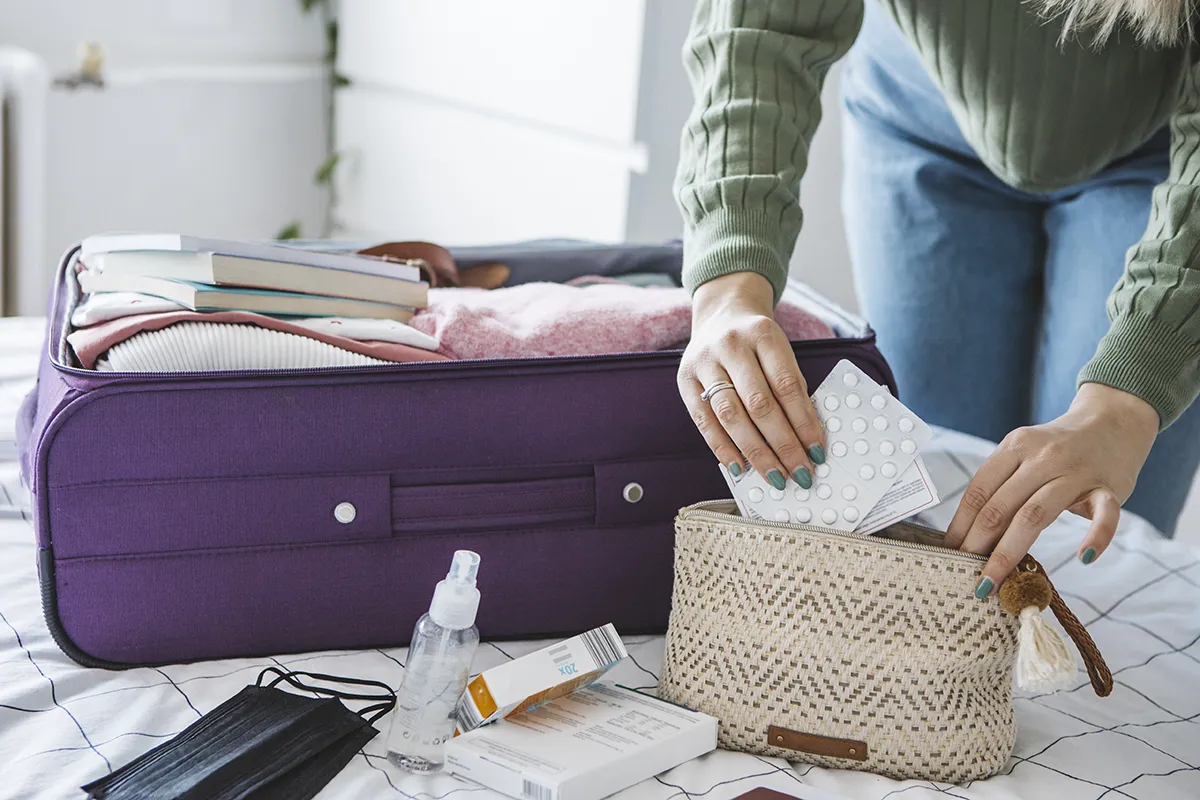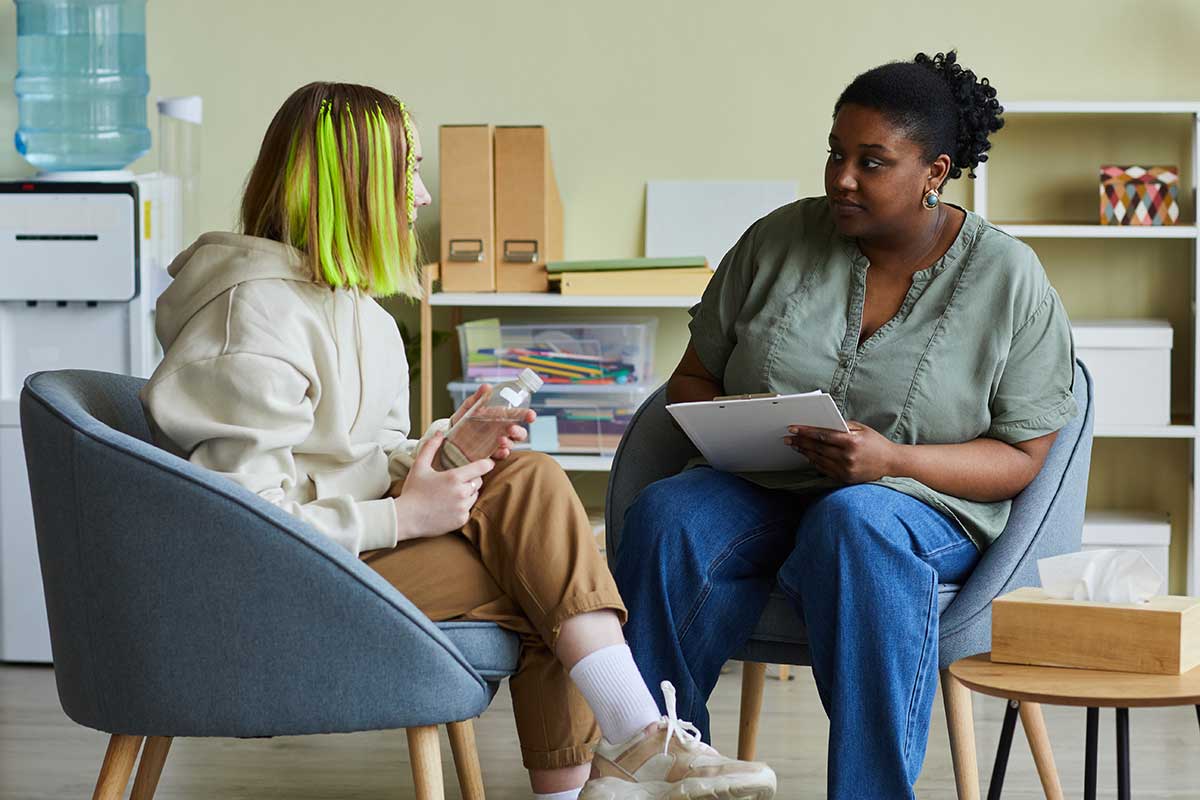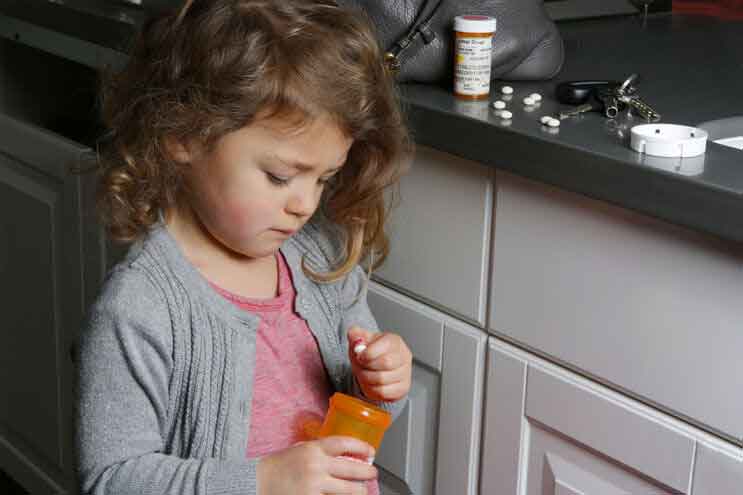When traveling with medicine, knowing the dos and don’ts is important to protect your health and those around you. Whether you’re traveling within the U.S. or leaving the country, it’s essential to know the laws and regulations of your destination. Read more below on how to secure your pills safely.
Traveling Within the US
Flying
According to the Transporation Security Administration (TSA), traveling by plane within the United States with medication on you is perfectly fine. Still, they do have some tips and rules depending on what you’re carrying:
- It is not necessary to present your medication to or notify an officer about any medication you are traveling with unless it is in liquid form (See next bullet).
- Medication in liquid form is allowed in carry-on bags in excess of 3.4 ounces in reasonable quantities for the flight. It is not necessary to place medically required liquids in a zip-top bag. However, you must tell the officer that you have medically necessary liquids at the start of the screening checkpoint process. Medically required liquids will be subject to additional screening that could include being asked to open the container.
- You can bring your medication in pill or solid form in unlimited amounts as long as it is screened.
- You can travel with your medication in both carry-on and checked baggage. It’s highly recommended you place these items in your carry-on in the event that you need immediate access.
- The TSA does not require passengers to have medications in prescription bottles, but states have individual laws regarding the labeling of prescription medication with which passengers must comply.
- Medication is usually screened by X-ray; however, if a passenger does not want a medication X-rayed, they may ask for a visual inspection instead. This request must be made before any items are sent through the X-ray tunnel.
- Nitroglycerin tablets and spray (used to treat episodes of angina in people who have coronary artery disease) are permitted and have never been prohibited.
Driving
Trafficking illegal drugs across state lines is not only risky but can also lead to more severe consequences than simple possession. You may be thinking, what about my prescriptions? Are they safe?
Prescription drugs:
All prescription drugs are safe to take across state lines as long as you don’t intend to distribute or sell any of them. What about opioids and other addictive painkillers? If you have a proper prescription from healthcare providers, you can bring and use them safely. For example, if you recently had surgery and were prescribed painkillers, it’s not illegal to transport those across state lines.
Recreational marijuana:
Although marijuana is legal in some states, transportation of it across state lines is complicated. California and several other states have fully legalized the use and purchase of marijuana, while other states have more specific regulations. However, since it is not federally legalized, transportation of marijuana across state lines is illegal. Laws are changing year by year, so it’s essential to stay in the know, but regardless if it was legal in California when you bought it, it’s still illegal to drive it to Oregon, where it is also legalized.
Traveling Internationally
Every country also has its own laws and regulations regarding the usage, purchase, and possession of medicine and other drugs. Medicines that are commonly prescribed or available over the counter in the U.S. might be unlicensed or even considered controlled substances in other countries. Though the rules vary, the consequences of violating their laws can include the country taking away your medicine or jail/prison time.
Before You Travel
It’s important to check with your destination’s embassy or consulate, as well as the ones in countries where you might have layovers, to make sure that your medication is permitted.
According to the CDC:
- Many countries allow a 30-day supply of certain medicines but also require the traveler to carry a prescription or a medical certificate from their health care provider.
- If your medicine is not allowed at your destination, talk with your healthcare provider about alternatives and have them write a letter describing your condition and the treatment plan.
- You may also want to check the International Narcotics Control Board website, which provides general information about narcotics and controlled substances for countries that have information available for travelers.
They also recommend that you make an appointment with your healthcare provider or a travel health specialist at least a month before you leave. They can assist you in getting destination-specific vaccinations, medications, and information that may be useful. It’s also important to discuss any concerns you may have, your itinerary, and planned activities, which will allow your provider to give more specific information and advice.
The CDC recommends that:
- If you plan to be gone for more than 30 days, talk to your healthcare provider about how you can get enough medicine for your trip. Some insurance companies will only pay for a 30-day supply at a time.
- If you are traveling to a different time zone, ask your healthcare provider about any changes to taking your medicine. Medicines should be taken according to the time since your last dose, not the local time of day.
- Find out how to safely store your medicine while traveling and check whether it needs refrigeration. Keep in mind that extreme temperatures can reduce the effectiveness of many medicines.
Lastly, preparing a travel kit, like RxGuardian’s new Rx Locking Bag, is a great way to safely and efficiently store items you may need, especially ones you may have difficulty finding abroad. Include your prescription and over-the-counter medications in your kit, and make sure that you have the correct amount needed for your trip (keep in mind possible travel delays).
It’s important to keep your kit with you at all times and away from your checked bags to ensure it’s never lost or destroyed. As a rule of thumb, TSA agents and other security personnel may have you physically show your medication, so make sure it’s easily accessible while going through checkpoints. You may want to leave your locking medication travel bag unlocked until you have cleared all TSA checkpoints, and then secure your medications.
For this option, the CDC also recommends:
- Keep medicines in their original, labeled containers. Ensure that they are clearly labeled with your full name, health care provider’s name, generic and brand name, and exact dosage.
- Bring copies of all written prescriptions, including the generic names for medicines. Leave a copy of your prescriptions at home with a friend or relative in case you lose your document or need an emergency refill.
- Ask your prescribing healthcare provider for a note if you use controlled substances or injectable medicines, such as EpiPens and insulin.
Buying Medication Abroad
Counterfeit drugs are common in some countries, and it’s important to be aware of the potential dangers or benefits that could occur if purchased. If you must purchase drugs while traveling for any reason, inform yourself as much as possible about the potential side effects and history if possible. Drugs.com has a pill identifier in case you or someone else is unsure of what they purchased or possess and may be able to provide you with information before you take it.
Storing your medication safely and appropriately during travel is important not only to your health but those around you. RxGaurdian is dedicated to ensuring this safety and also making the process easy. You can check out our full list of products here if you’re interested in the other ways to safely secure your medication. However, if you are planning on traveling soon, the Rx Locking Bag is the best in class for safe medication storage and easy access while you’re on the go.



